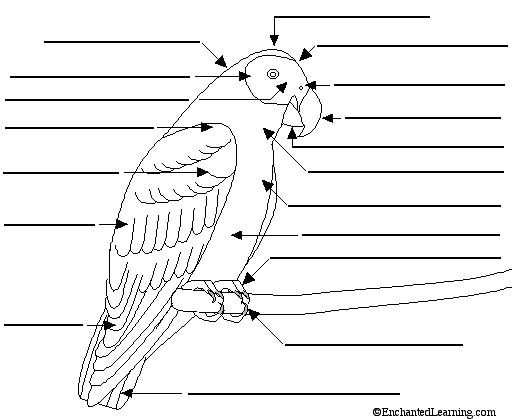abdomen - the belly.
auriculars (ear coverts) - the feathers that cover the bird's ear opening (located behind the eyes).
breast - the area over the belly and under the th
primaries - the main flight feathers on the wings (they are located on lower [outer] parts of the wings).
sc apulars
apulars - feathers on the shoulder (also called lesser secondary coverts).
secondaries - the smaller flight feathers on the wings - they are on the upper part of the wings (above the primaries).
tail feathers - flight feathers at the end of the bird (used for steering).
toes - the digits of the feet.
throat - the area under head and above the chest.
upper mandible - the upper part of the bill.
wing coverts - small feathers that cover the base of larger wing feathers (located at the top of the wings under the scapularsroat.
cere - the waxy-looking bumps on the upper beak of some birds (including the parrots, pigeons, and some hawks).
claws - hard talons at the end of each toe.
crown - the top of the bird's head.
forehead - the area directly above the eyes.
lore - the area on each side of a bird's face, between the eyes and the upper bill.
lower mandible - the lower part of the bill.
nape - the back of the neck.